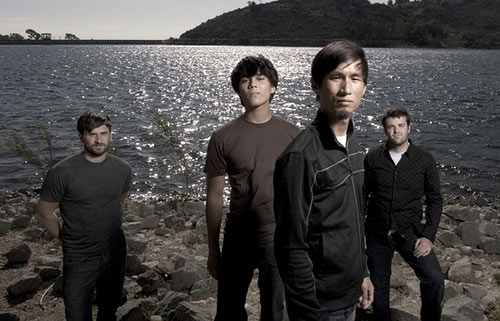Future Of Forestry Discography Test
Album Description. The second in Eric Owyoung's three-part exploratory series embellishes the band's ethos lyrically (with a focus on faraway places) as well as musically (adding world music drum rhythms on several tracks).
- Once, you'll click on 'buy selected' button - you'll be redirected to 'My Downloads' page, where you can download the music you've purchased.
- Find the books you want all in one place and at prices you’ll love. Target has all the major genres and best sellers. Free 2-day shipping on orders over $35 and save 5% with your RedCard.
I am happy to be here. This conference gives me a personal opportunity to learn more about forest research programs in other countries. It is also a good opportunity for us to compare notes on the challenges facing forest research worldwide in this era of globalization.
For the United States, this is a time of growing complexity in both forest management and forest research. Unfortunately, it is also a time of tight budgets as our nation—and others as well—deal with challenges that include defense and homeland security.

What I would like to do today is to demonstrate our continued commitment to forest research in the United States and to give you an idea of where I think we are headed.
Science Roots
The U.S. Forest Service was founded more than a century ago to help our nation conserve our forests on both public land and private land. At the time, the whole idea of conservation seemed kooky to many of our citizens. After all, we had a whole continent of forests, rivers, and other untapped resources, so why waste time trying to protect a limitless resource?
But it was becoming obvious that our resources did have limits—and that we were fast approaching those limits. By 1900, we had already cleared away forests from whole regions of our country, resulting in vast fires and floods. We were starting to log our remaining forests in the same unsustainable way.
Foresters and others said, “Enough!” Most foresters were trained in Europe, and they ran a Bureau of Forestry in the U.S. government. By 1900, they were already conducting scientific tree studies and conceiving research plots. Their goal was to help private and public forest landowners place U.S. forests under sustainable management.
In 1905, they helped found the U.S. Forest Service. To this day, the Forest Service remains responsible for developing the knowhow and technology that forest landowners in the United States need to manage their lands sustainably. We do that partly through research and experimental areas on the national forests and grasslands, which are managed by the U.S. Forest Service. National forest management is closely tied to forest research—and vice versa.
International Roots
As I mentioned, our earliest foresters and forest scientists were trained in Europe. Some were European immigrants. They were keenly interested in forestry abroad, and they often traveled to France, Germany, Russia, and other places.
That international connection has grown even stronger in recent decades. This very conference attests to that. There are a number of reasons. I will mention just three:
- First, there is the impact of global markets for wood, including illegal logging. Out of both altruism and, frankly, self-interest, the United States wants to help share the knowhow and technology for sustainable forest management worldwide.
- Another reason for stronger international collaboration is mutual learning. Fire management is a good example. For years, the United States has learned from other countries with similar fire regimes about what works in wildland fire management—and what doesn’t. We have also shared firefighting resources during severe fire seasons, and we are deeply grateful for the support we have received from other countries. There is a great deal we can continue to learn from each other’s firefighting operations.
- Finally, there is the growing global complexity and interdependency of our mutual forest research and management challenges. Examples include invasive species … biodiversity—migratory birds come to mind … and climate change. I will come back to climate change in a moment.
In all of these areas—and in many more—our scientists work closely with our International Programs staff to engage partners worldwide. I see international collaboration in forest science and management not only continuing, but also expanding in the future.
Climate Change Research
Now back to climate change. Climate change is perhaps the greatest challenge to conservation the world will face in this century. The U.S. Forest Service has been involved in climate change research since the 1980s. We have also been exploring climate change from a public policy perspective. We have concluded that forest-related research is key in at least two ways.
Adaptive Management. One way is through adaptive management. No matter what we do, there will be changes to forest ecosystems. The ship has left the harbor, so to speak, and it will take decades or even centuries to change its course, even with the best carbon management. We have an obligation to the people we serve to help the ecosystems they cherish … and that they depend on … adjust to climate change.
Future Of Forestry Discography Test Free

It won’t be easy. As temperatures warm, ecosystems are increasingly coming under stress from wildland fire, air pollution, insects, diseases, and invasive species. We need to better understand the effects of climate change under each of these stresses. We also need to research methods that landowners can use to increase forest resilience and to ease any unavoidable transitions to new plant and animal communities.
Future Of Forestry Tour
Species are already changing their ranges or their seasonal behavior. For example, marmots in our western mountains are emerging from hibernation 3 weeks earlier. We need research to identify and track the changes and to understand the implications.
Review: Text Twist 2 Game Pc Video Game Full & Final Setup In A Single Direct Link Works For All Windows Operating Systems (Xp,7/8/8.1/9/10). Text Twist 2 Game Game Is Very Interesting Game To Play And Enjoy. Text Twist 2 Game Pc Video Game 100% Working And Tested Links Of Full Text Twist 2. Text Twist 2, free and safe download. Text Twist 2 latest version: Free Word Play Fun at Your Fingertips. Text Twist 2 is the second installment of the word puzzle game that is already very popular with. Play Text Twist 2, the sequel to the mega-popular Boggle-like word game. Download a free trial, read. › Read Full Text Twist 2 Review. This “get out of jail free” pass is an improvement over the old version because it extends play and makes up for one or two bad rounds. Other improvements in. Download the TextTwist 2 1.4.9 at Aptoide now! ✓ Virus and Malware free ✓ No extra costs. Download full version.
If marmots are coming out 3 weeks earlier, what does that mean? What will they eat? And what impacts do they have on the land by coming out earlier? We need research to understand such things.
A major obstacle that migrating species face under climate change is forest fragmentation—in other words, the human footprint on the land. In some areas, we might need to assist species migrations or conserve genetic materials. That, in turn, might raise ethical concerns. Again, we will need more and better research to deal with such challenges.
Carbon Management. In addition to adaptive management, there is the question of the role forests can play to reduce greenhouse gases in the atmosphere. From 1990 to 2004, forest growth in the United States offset about 10 percent of the carbon dioxide emitted by our citizens burning fossil fuels. We need to sustain that amount. Even better, we should increase it.
The U.S. Forest Service is already exploring ways of integrating carbon sequestration into sustainable forestry. As you know, carbon is on the cutting edge of markets for ecosystem services, and we are working to provide a scientific foundation for carbon markets, especially for forestry offsets.
For example, researchers are calibrating the carbon stored in boards and other wood products. We are also pilot-testing a forest thinning project on the Mendocino National Forest in California. Researchers are measuring and validating three potential kinds of carbon offsets from forestry: avoided crown fire emissions; increased carbon uptake in thinned stands; and displaced fossil fuels through the use of wood for bioenergy.

Based on the results of the Mendocino pilot test, a private forest landowner might some day be able to restore a forest stand by drawing on several income streams from carbon, in addition to income from materials removed. Results would include a healthier forest, better fire protection, greater biodiversity—and a small but important contribution to offsetting atmospheric carbon emissions.
Forestry offsets are currently tightly restricted on most carbon markets, including those under the Kyoto Protocol. In time, forest research might give us reason to loosen some of those restrictions.
Science That People Can Use
The carbon pilot test in California illustrates the direction our forest research and development programs are taking. In a nutshell, we want to better integrate forest research into practical on-the-ground forestry. We call it “science that people can use.”
The people of the United States tend to be practically inclined. They like to see results. If they don’t see results, they tend to get impatient. In particular, they have little patience for what they see as theoretical studies of little or no practical value.
Moreover, public skepticism of government has grown in the United States over the last century. Where federal foresters and researchers were once trusted to find the best solutions, our citizens now want to find solutions for themselves. There is a strong desire for grassroots participation in natural resource management and even research.
As you know, there is a worldwide trend to decentralize forest governance. Many countries are questioning or abandoning top-down models and searching for more participatory models. Our country is no exception.
We believe that’s good. Not only is it fundamentally democratic to broaden participation in forest governance, it also fits with our own traditions at the U.S. Forest Service of working at the local level through partnerships. In addition, it lets us tap into local knowledge and capacity, which can be very helpful to land managers and researchers alike.
Over time, we hope to lend public legitimacy to forest research by focusing on “science that people can use” … on science that people can see, understand, and maybe even get involved in.
Accountability
Toward that end, we are taking steps to ensure that we are fully accountable to the people we serve. For the first time, the U.S. Forest Service has made research delivery one of several top goals in our strategic plan for fiscal years 2007 to 2012. Specifically, the goal is to provide science-based applications and tools for sustainable natural resource management. Notice the focus on practicality—on tools and applications—on science that people can use.
Of course, that leads to the question of measuring performance. I think this is an area we are all interested in, so I will take a moment to describe our approach.
The outcome we want is management decisions that are informed by the best available science—and facilitated by the best available science-based tools. We want to increase the use of the research applications and tools we develop, and we decided that the best way to measure our success is in terms of customer satisfaction with our products and services. People tend to use things they are satisfied with, so customer satisfaction is a good performance measure.
Commitment to Science
In closing, through the U.S. Forest Service, the United States has a long history of forest research in support of sustainable forest management. We face some very serious challenges to forest management in the decades to come. On a global scale, perhaps the biggest challenge is climate change. The United States is committed to meeting that challenge through solutions grounded in sound science—through science that people can use.
#